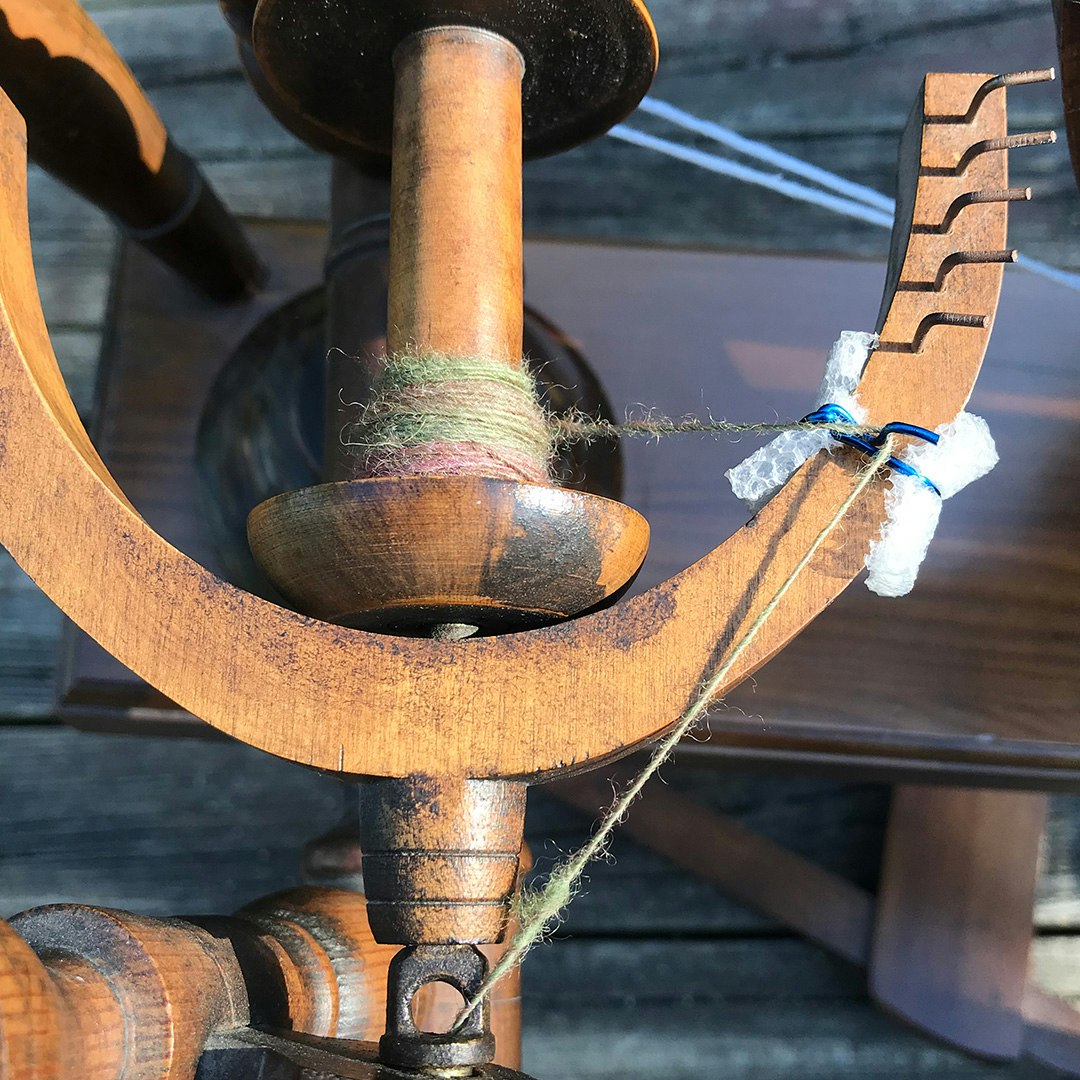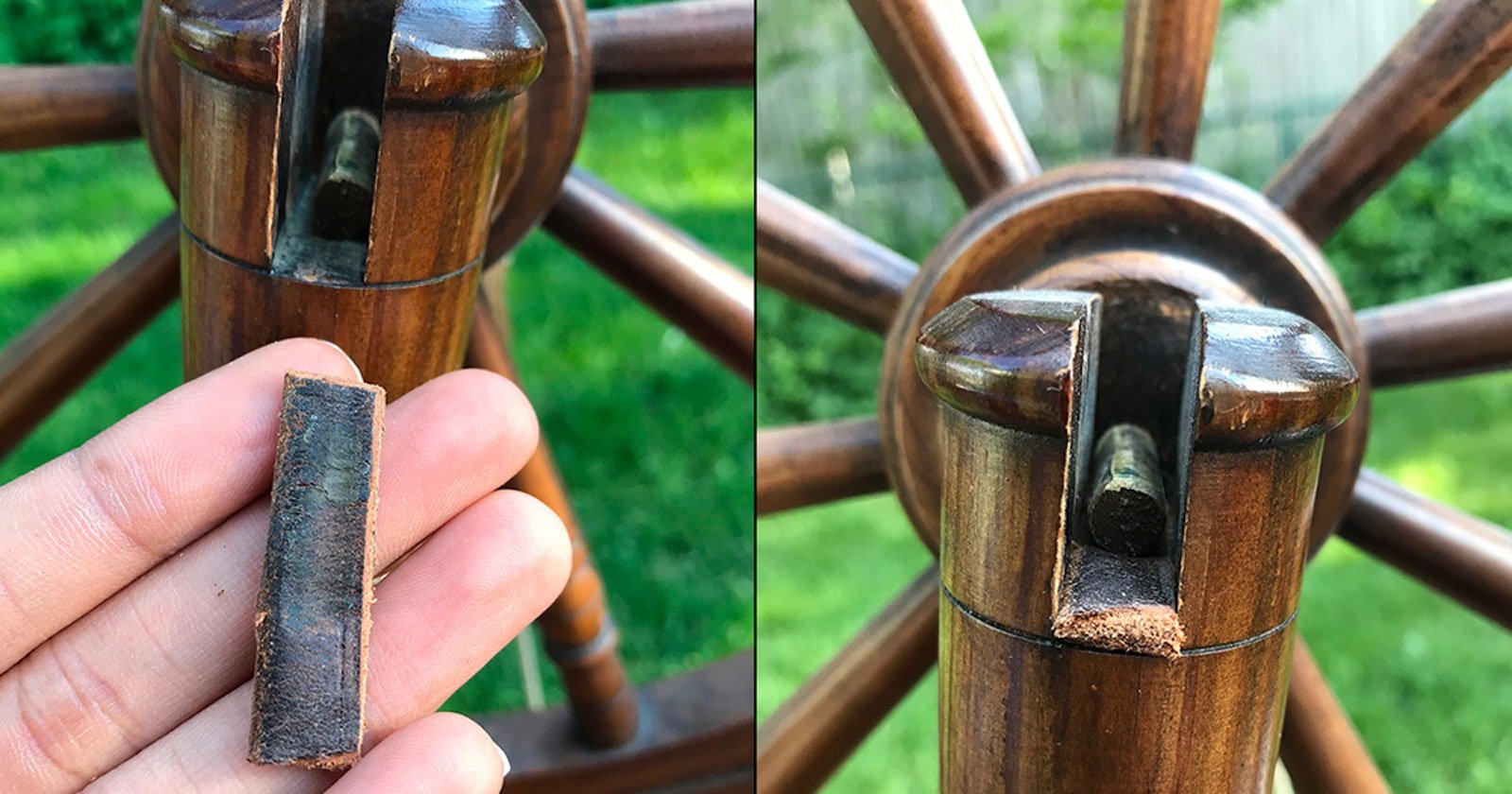It is not uncommon for handspinners to have a little bit of a struggle getting their older spinning wheels to perform properly. Often, it is a really simple fix, such as changing a stretched-out drive band or applying oil to the necessary parts. But what can be done to solve other types of troubles? Here are my tips for dealing with 3 troublesome issues.
Thrown Drive Band
If an older spinning wheel continually throws the drive band, then it is worth checking the drive wheel’s alignment. In some cases, the metal axle of the drive wheel can wear down the wood of its support posts. This type of wear is due to excessive use (years of work), and it can cause the drive wheel to lean in one direction. When a drive band is used for such a wheel, the result is a drive band that leaps off of the drive wheel.
One way to fix this is to create a shim using a piece of leather. The leather can be sourced from scraps or even an old belt, and it sometimes helps to oil the leather. Cut a strip of leather to size so that it fits into the support posts. Place the cut piece into the space to test and make sure it allows the drive wheel to spin freely. It is common to bend the leather into a slight U-shape following the natural curve of the support posts for a snug fit and firm placement. However, as long as the shim stays in place and the axle spins freely and is level when resting on the shim, the shape of the leather is not crucial.
Spinning Surfaces
Some spinning wheels get a little cranky, depending on the surfaces on which they are spun. Most older spinning wheels perform best on a hardwood floor. If you spin on a surface such as a carpet, the legs of the spinning wheel tend to nestle into the carpet, interrupting or hindering treadle movement. To address this, you can use a flat, foam mat, similar to what knitters use for blocking knitted fabric. The mat can level the surface on a not-quite flat or smooth flooring.
For some wheels, one common problem is having a spinning wheel “walk away” while in use on hardwood floors and other slick surfaces. Placing shelf-liner underneath the base of the legs is a handy fix, and it will help keep the spinning wheel right where it should be—near the handspinner.

Does your antique wheel lack enough flyer hooks? Make your own sliding hook from a few simple materials.
Not Enough Hooks
Most antique and vintage wheels have metal hooks, as opposed to a sliding hook. For some wheels that have missing hooks, or no placement for hooks at all, you can make a removable sliding hook. It just requires a tiny bit of 16-gauge aluminum jewelry wire; recycled packing foam, to protect the wood when sliding; and jewelry pliers and wire cutters, to form the proper hook shape. When placed firmly on the flyer arm, this self-made sliding hook stays in place without scratching the surface of the wood, and it also helps the spinner to fill the bobbin evenly. The best part is that it is completely removable, and you can use your favorite colored wire.
Heavenly Bresser is the owner of Heavenly Knitchet. She is an award-winning handspinner and teacher at major fiber events all over the United States. Aside from spinning and teaching, she can be found dyeing fibers and making jewelry. Her goal is to inspire, encourage, and uplift other fiber artists. Visit her online at www.heavenlyknitchet.com.

